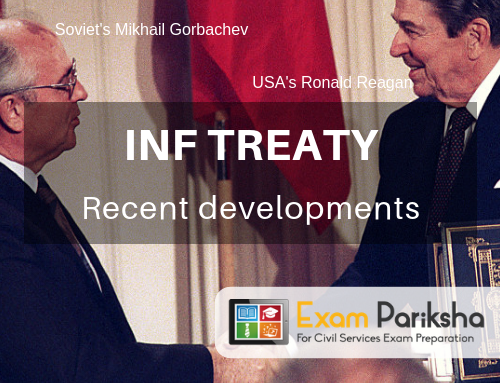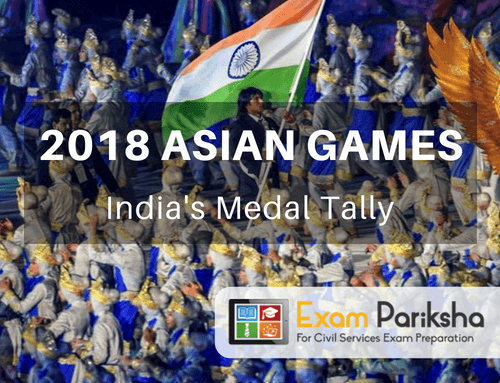Just like other forms of art, dance also involves expression of all characteristics of the human mind including varied human emotions known as ‘ras‘. Human emotions have been categorized into 9 ‘rasa’ called ‘Nav-rasa‘.
- Hasya Rasa — laughter, mirth
- Bhayanak Rasa— fear, evil
- Rudra Rasa — Anger
- Karun Rasa — Compassion, pathos
- Vir Rasa — Valour, courage
- Adbhut Rasa — Wonder, astonishing
- Vibhatsa Rasa — Disgust, terrifying glory
- Shaanti Rasa — peace
- Shringaar Rasa — love, decorating one’s self/aesthetics
Text Sources containing details of performing arts in Ancient India, which are known as earliest traditions of Indian Classical Dance are :
- Bharata’s Natyashashtra (between 2nd century BC and 2nd century AD) – Natyashastra is also known as the fifth veda.
- Matanga’s Brihaddesi (8-9th century AD)
- Jayadeva’s Gita Govinda (12th century) – brilliant raga kavya of orissa, where each song is set in different raga on theme of love between Radha and Krishna.
- Abhinavagupta’s Abhinavbharati

Analytical Aspects of Classical Dance in India:
- nritta (pada sanchalan) – foot work
- nritya (anga sanchalan) – body movements
- natya (abhinay) – facial expressions
An ancient classification that is followed in all styles is of Tandava and Lasya. Tandava – refers to the masculine, and its heroic bold and vigorous. Lasya – refers to the feminine, and its soft, lyrical and graceful.
Abhinaya, broadly means expression. Expression is achieved through angika, the body and limbs, vachikasong and speech and aharya, costume and adornment; and satvika, moods and emotions.
Importance of Dance in Indian Culture
In traditional Indian culture, the function of dance was to give symbolic expression to religious ideas. Therefore, figure of Lord Shiva as Nataraja in dance represents the creation and destruction of cosmic cycle. The art of dancing may be traced to the Harappan culture which is testified by the bronze statue of a dancing girl.
Difference between Classical and Folk Dances
With time dances have come to be divided as folk and classical. The differentiating factor is generally the performance. Classical form of the dance was performed in temples as well as in the royal courts. While the dance in temples had a religious objective to please Gods , the dance in courts was used purely for entertainment.
- Bharatanatyam and Mohiniattam – part of the rituals in temples.
- Yakshagana, a form of Kathakali in Kerala, – Ramayana and Mahabharata stories
- Kathak and Manipuri – stories of Krishna and his leela
- Odissi – worship of Lord Jagannath.
The Folk dances have evolved from the lives of common people and were mostly performed in unison. They are meant to serve as a medium for celebrate most of the harvesting season by giving expression to the joys and sorrows of the people-folk. The following folk dances are popular for their uniqueness.
- Bihu celebrates harvest season of Assam,
- Garba of Gujarat,
- Bhangra and Gidda of Punjab,
- Bamboo dance of Mizoram,
- Koli is the fisherman’s dance of Maharashtra,
- Dhumal of Kashmir,
- Chhau of Bengal.
Martial dances of India
- Chholia of Uttranchal,
- Kalari paittu of Kerala,
- Thang-taa of Manipur
- Gatka of Punjab
- Paika of Orissa
- Pang Lhabosol of Sikkim
List of Important Indian Classical Dances
Questions are often asked about regions to which the following famous dances are associated. Hence, the list of important classical dances of India has been presented below to give a quick reference guide for revision.
- Bharatanatyam – Tamil Nadu
- Chhau – Odisha, West Bengal, Jharkhand
- Gaudiya Nritya – West Bengal
- Kathak – North India (Uttar Pradesh)
- Kathakali, Mohiniyattam – Kerala
- Kuchipudi – Andhra Pradesh
- Manipuri, Thang Ta – Manipur
- Odissi – Odisha
- Sattriya – Assam
List of Folk Dances of India
Folk dances are important part of Indian culture. Hence, aspirants should be aware of the following important folk dances of states in India to be able to answer questions in exams.
- Andhra Pradesh : Kuchipudi, Kolattam
- Arunachal Pradesh : Bardo Chham
- Assam : Bihu Dance
- Jharkhand : Karma / Munda
- Chattisgarh : Panthi, Rauta Nach, Gaur Maria dance
- Goa : Tarangamel, Dashavatara, Dekhni, Dhalo, Dhangar, Fugdi, Ghodemodni, Goff, Jagar, Kunbi, Mando, Muslam Khel, Perni Jagar, Ranamale, Romta Mel, Divlyan Nach (Lamp dance), Veerabhadra
- Gujarat : Garba, Raas, Tippani dance, Padhar
- Himachal Pradesh : Kinnauri Nati, Namgen
- Haryana : Saang dance, Chhathi Dance, Khoria Dance, Ras Leela, Dhamal Dance, Ghoomar Dance, Jhumar Dance, Loor Dance, Gugga Dance, Teej Dance, Phag dance, Chaupaiya.
- Karnataka : Yakshagana, Bayalata, Dollu kunitha, Veeragaase dance
- Kashmir : Dumhal
- Lakshadweep : Lava
- Madhya Pradesh : Tertali, Charkula, Jawara, Matki dance, Phulpati Dance, Grida dance, Maanch
- Maharashtra : Pavri nach, Lavani,Koli
- Manipur : Thang Ta, Dhol Cholom
- Mizoram : Cheraw dance
- Nagaland : Chang lo / Sua luo
- Odisha : Gumura Dannce, Ruk Mar Nacha, Goti Pua, Nacni, Odissi, Danda Nacha, Baagh nach/Tiger dance, Dalkhai, Dhap, Ghumra, Karma nach, Keisabadi.
- Puducherry : Garadi
- Punjab : Bhangra, Giddha, Malwai Giddha, Jhumar, Karthi, Kikkli, Sammi, Dandass, Ludi, Jindua.
- Rajasthan : Ghoomar, Kalbelia, Bhavai, Tera tali, Chirami, Gair.
- Sikkim : Singhi chham
- Tamil Nadu : Bharatanatyam, Kamandi, Devarattam, Kummi, Kolattam, Karagattam, Mayilattam/Peacock dance, Paambu aatam/snake dance, Oyilattam, Puliyattam, poikkal kuthirai attam, Bommalattam, Therukuthu.
- Tripura : Hojagiri.
- West Bengal: Gambhira, Kalikapatadi, Nanci, Alkap, Domni
Let us know of any mistakes or omissions in this article in the comments below. Also do let us know if this short compilation of important dances of India was helpful for you. If not, tell us how we can make it better by sharing your thoughts with us. Thank you.





